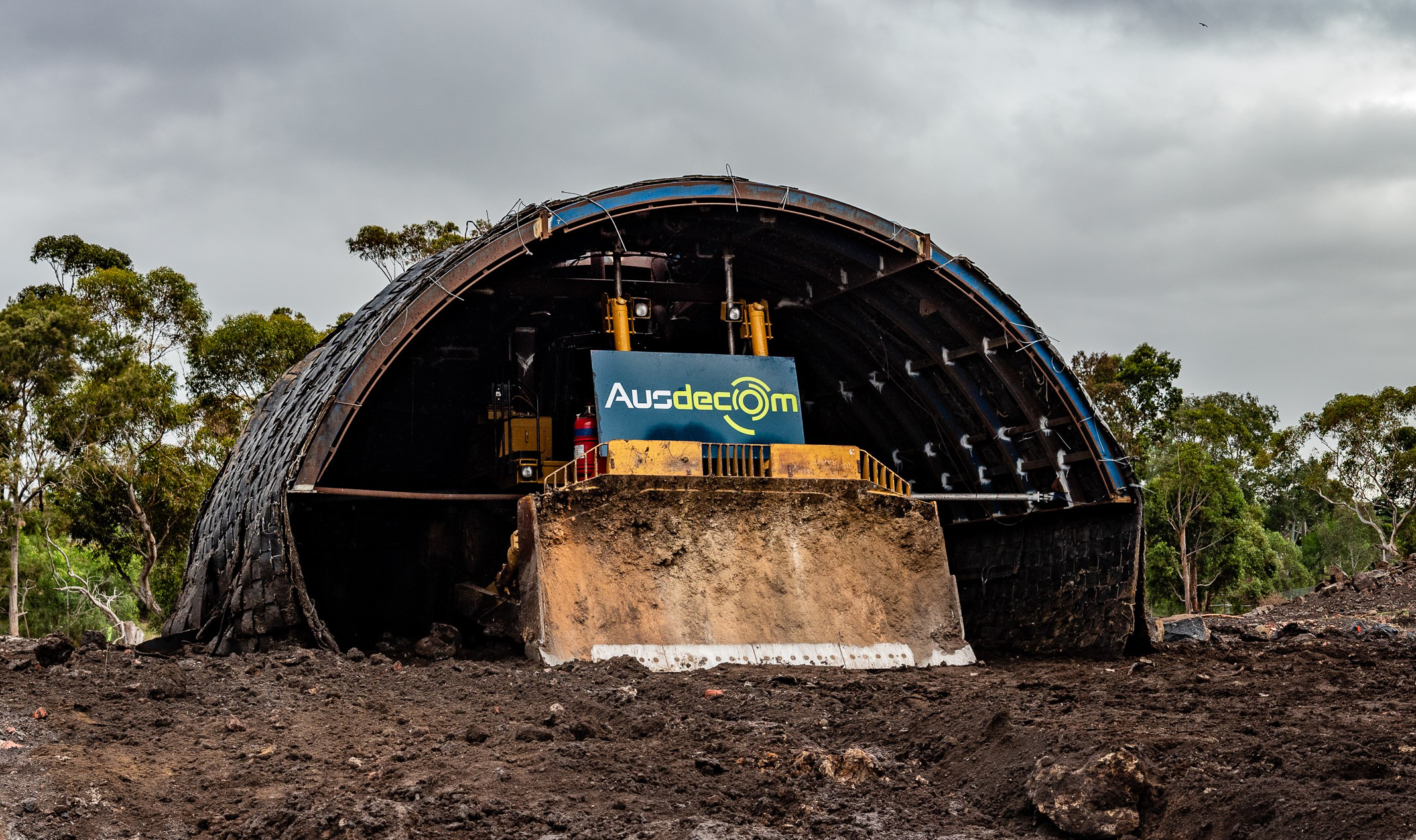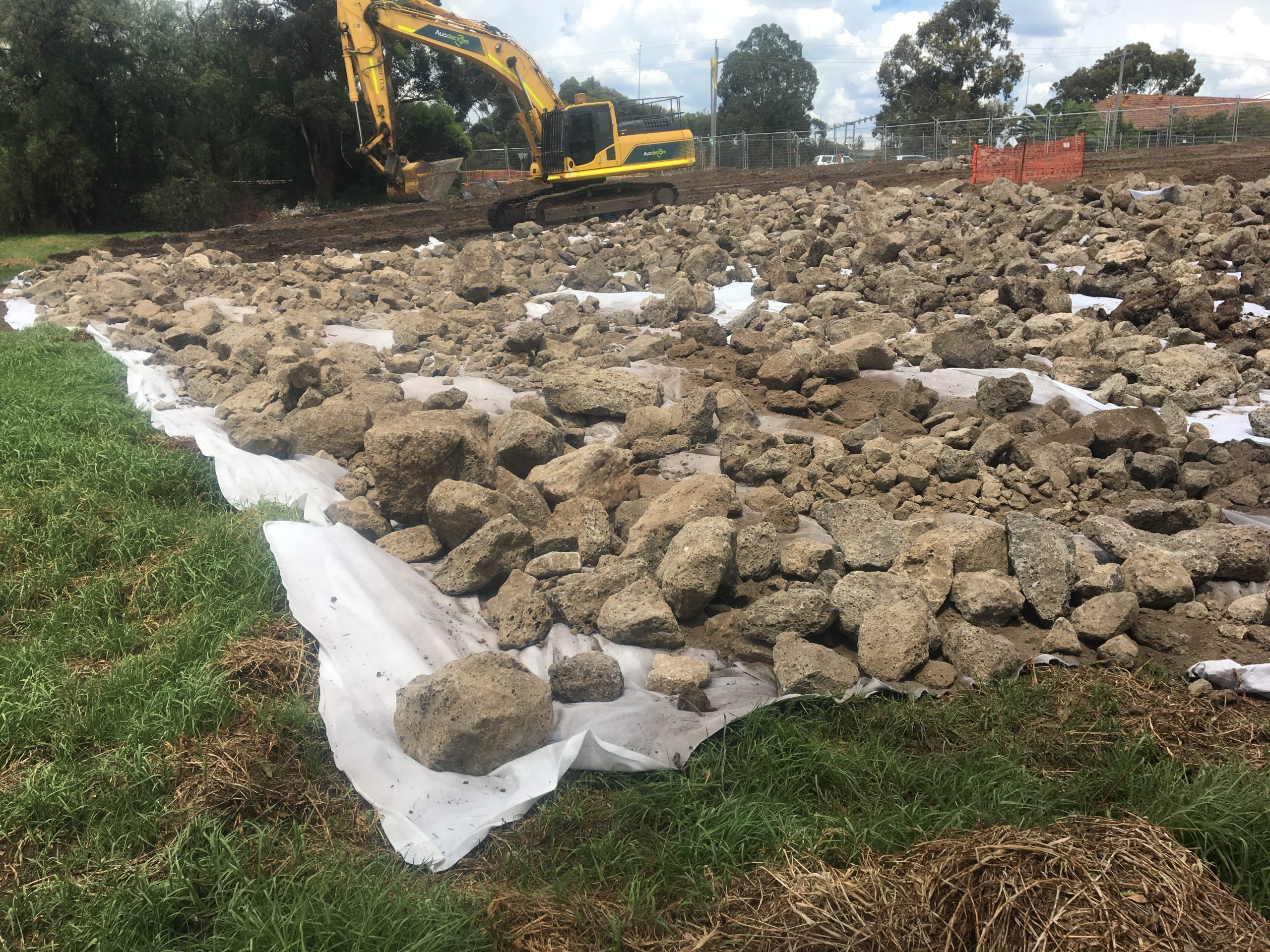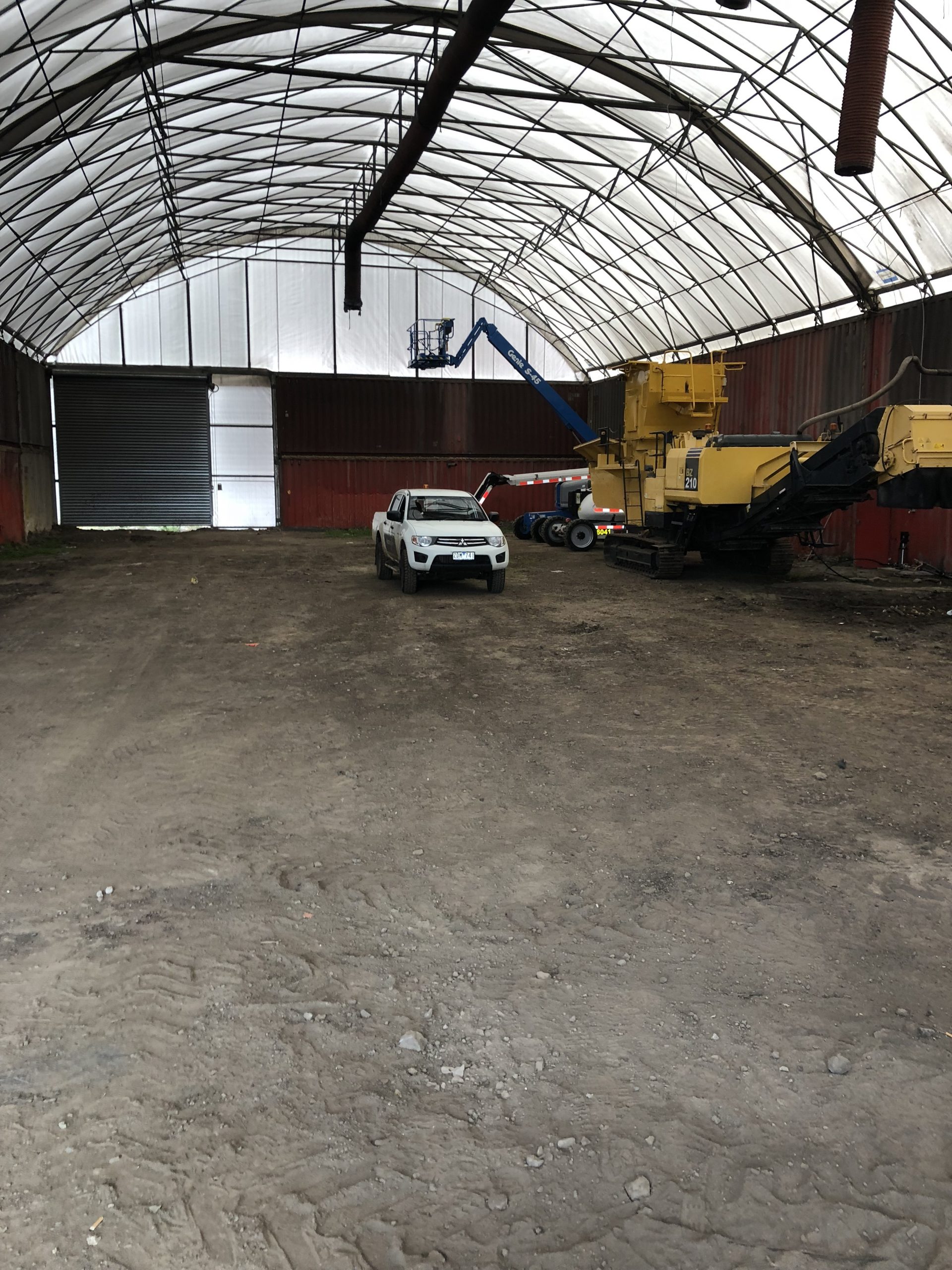Extensive remediation works to remove hazardous contaminants in soil across the site.
Ausdecom has assisted in grid based and targeted sampling across the 130HA site, targeting a number of various contaminants. Excavation works to date have involved the identification and clean-up of contaminants including di-nitrotoluene (DNT), nitrocellulose (NC), Lead, nitro benzene (NB), styphnic acid, trinitrophenylmethylnitramine (aka tetryl), and asbestos within asbestos pipes and fill material. On top of this, Ausdecom’s purpose built remote operated D10T dozer managed the high explosive risk associated with nitroglycerine (NG) across certain parts of the site.
The high-risk environment required careful management and tracking of hazardous waste, including the removal of a 4.53 km of asbestos pipework, 24.7 km of potentially explosive residue affected terracotta pipe, and the tracking of over 12,000 stockpiles destined for either re-use, treatment or off-site disposal.
Lead impacted soil was also treated on site, using specialist remediation methods, in order to immobilise the leachability of lead within soil. This was completed within a specifically designed and constructed lead treatment facility on site, in order to contain any lead dust movement and prevent any contamination migration.
Background:
The site has been continuously operating since circa 1874 and has manufactured a wide range of products including explosives, acids, lead nitrate, formaldehyde, ammonia, nitrocellulose, nitrobenzenes and resins. Asbestos (friable and non-friable) has been used for a wide range of applications to support the manufacturing of these products including gaskets, steam pipe lagging, roofing / walls etc. Historical disposal of asbestos waste was at a lesser standard historically and as a result some asbestos was placed on the site within the fill material.
Soil investigation and remediation works are occurring on the Orica Deer Park site as part of an EPA Clean Up Notice.
Types of soil remediation works completed:
Ausdecom has assisted in a number of soil investigations across the site. A large grid-based test pitting program was completed across the site for various soil contaminants, and subsequently targeted excavations were completed from those original findings. Targeted remediation excavations were also completed based on historical information (e.g. NG manufacturing / storage building footprints).
Ground disturbance works to date have positively identified a number of contaminants in the soil throughout the site including (but not limited to): Nitroglycerine (NG), Nitrotoluene, Di-nitrotoluene (DNT), Nitrocellulose (NC), Nitro Benzene (NB), Nitrophenols, Tetryl, Lead (and lead nitrate), Styphnic acid and Asbestos within the fill material and asbestos pipes / pits.
Ausdecom have incorporated extensive tracking and database records for the site. All soil movements are tracked on Ausdecom’s material tracking register. There have also been over 12,000 stockpiles generated as of this time in the project, which have been managed and tracked on Ausdecom databases. Movements for re-use onsite or for off-site disposal have all been recorded in ADS databases.
Nitroglycerine (NG) soil remediation programme:
Due to the highly explosive nature of NG liquid, the only way to safely remediate any residual NG in soil was to use a remote operated machine. Subsequently a D10T Dozer was fitted with a remote operating system* (as pictured), with a ‘blast absorbing’ shell. The dozer was then able to be used to disturb and expose soil where potential liquid NG was handled from past site activities. The soil could then safely be tested for disposal off-site or reuse on-site.
*The D10T dozer remote operating system, included the installation of cameras attached to the dozer and dozer blast shell frame, which was operated from a Landcruiser GXL Troopcarrier outside the set exclusion zone (50 m) using monitoring screens set up inside the vehicle.
Lead remediation programme:
Lead contaminated soil was excavated, stockpiled and tested (by an environmental consultant) and based on contamination status, either re-used on site (if classified as Fill Material soil) or disposed off-site for disposal (if classified as Fill Material (with asbestos) or Category C contaminated soil (with or without asbestos)) or treated (If either category A or B contaminated soil) with a stabilising reagent so lead is unable to leach out of soil, and then disposed off-site.
Stabilising/treating the leachability of the lead involved the setup of a lead treatment enclosure (as pictured) on the NE of the site. The enclosure was basically created for lead dust containment, during the treatment process. It acted to minimise the spread of dust generated from the treatment process as vast amounts of dust was generated due to the constant movement of soil from the use of excavators and the reterra, as well as the dust created from the stabilising reagent which was a powder itself. It also ensured that contamination (lead and/or asbestos contamination) would not be spread across the site and also to minimise / eliminate the potential for inhalation of lead impacted dust/soil to any stakeholders in close proximity of the works. Treated/stabilised soil was then disposed of off-site to landfill, using a gantry set up for efficiently wrapping trucks and trailers with plastic (requirement for Cat A & B lead impacted soil transport trucks to be plastic lined). Just under 32,000 tonne of high concentration lead impacted soil (Category A and B) were treated and disposed of off-site as part of the lead remediation programme.
Other safety precautions in regards to lead include all personnel having lead blood testing done (quarterly) to ensure there is no lead absorption into any workers on-site over time. All machines on site are also fitted with HEPA filter in the air-intake filters.
Other potential explosive residues:
As discussed, other explosive residues are present on-site. As a result, only excavators fitted with polycarbonate windows are used for excavations where there is a potential for explosives residues. There is also a 30 m exclusion zone around all plant.
Ausdecom also ensures that explosive field screening spray (Sprayview) is used as a first indicator of any explosive contamination where it is suspected during the works. All materials are kept wet during disturbance, handling and removal using a watercart to minimise friction potential, heat and dust.





